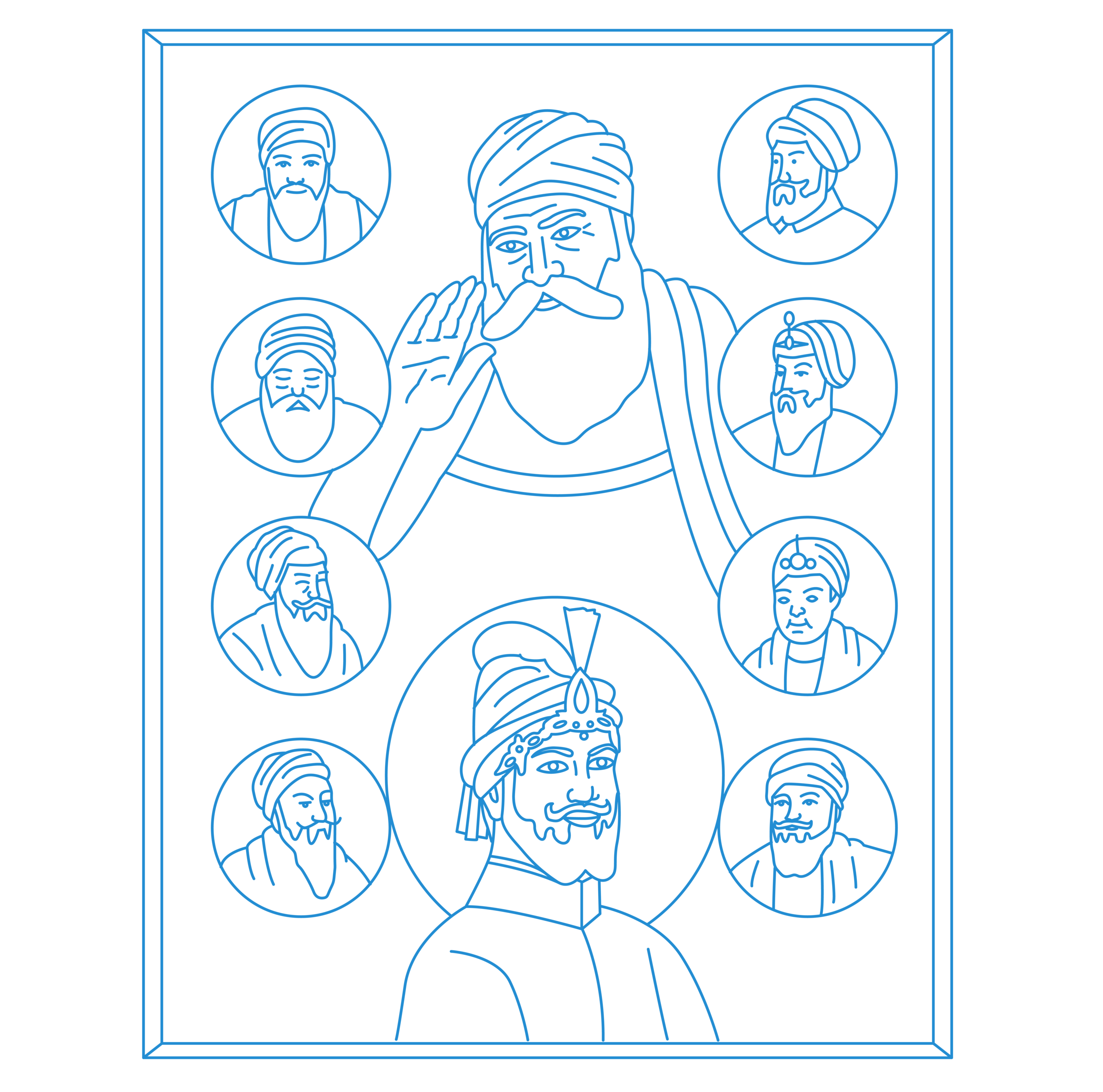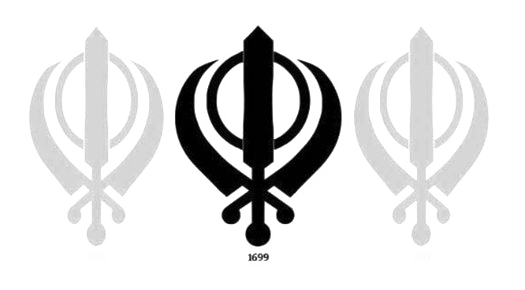Download top and best high-quality free Sikhism PNG Transparent Images backgrounds available in various sizes. To view the full PNG size resolution click on any of the below image thumbnail.
License Info: Creative Commons 4.0 BY-NC
Sikhism or Sikhi (from Sikh, ‘disciple,”seeker,’ or ‘learner’) is an Indian Dharmic religion that began at the end of the 15th century CE in the Punjab area of the Indian subcontinent. With around 25″30 million Sikhs as of the early twenty-first century, Sikhism is one of the most recent major faiths and the world’s sixth-largest organized religion. However, it is estimated that there are 120″150 million (12″15 crore) Sahajdhari or non-khalsa Nanakpanthi Sikhs worldwide who believe in the ten Sikh Gurus and the Guru Granth Sahib.
Sikhism arose from the spiritual teachings of Guru Nanak (1469″1539), the first Guru, and the nine Sikh gurus who followed him. Gobind Singh (1666″1708), the tenth guru, appointed the Sikh scripture Guru Granth Sahib as his successor, bringing the line of human gurus to an end and establishing the text as the final everlasting 11th living guru, a religious spiritual/life guide for Sikhs. Guru Nanak taught that the ideal man “establishes union with God, knows His Will, and carries out that Will” through a “active, creative, and practical life” of “truthfulness, fidelity, self-control, and purity,” and that the ideal man “establishes union with God, knows His Will, and carries out that Will.” The sixth Sikh Guru, Guru Hargobind (1606″1644), created the notion of the miri (‘political’/’temporal’) and piri (‘spiritual’) realms coexisting.
The Mul Mantar (), a foundational prayer concerning ik onkar (‘One God,’) begins the Sikh canon. Faith and meditation on the name of the one creator; divine unity and equality of all humankind; seva (‘selfless service’); striving for justice for the benefit and prosperity of all; and honest conduct and livelihood while living a householder’s life are among Sikhism’s core beliefs, as articulated in the Guru Granth Sahib. Sikhism rejects assertions that any religious tradition has a monopoly on Absolute Truth based on this test.
Simran (meditation and recall of Gurus’ teachings), which can be conveyed musically via kirtan or internally through naam japna (‘meditation on His name’), is emphasized in Sikhism as a way to sense God’s presence. It instructs followers on how to change the “Five Thieves” (i.e. lust, rage, greed, attachment, and ego).
During periods of religious persecution, the faith grew and changed, drawing adherents from both Hinduism and Islam. After refusing to convert to Islam, Mughal rulers of India tortured and murdered two Sikh gurus, Guru Arjan (1563″1605) and Guru Tegh Bahadur (1621″1675). The persecution of Sikhs prompted Guru Gobind Singh to establish the Khalsa in 1699 as an order to safeguard religious and moral freedom, with members exhibiting the traits of a Sant-Siph (‘saint-soldier’).
In Sikhism, God has no gender in the literal sense, yet God is depicted as masculine and God’s strength as feminine symbolically. The tenth guru Guru Gobind Singh Ji, for example, refers to God as akaal purkh (‘beyond time and space’) and nirankar (‘without form’), yet he also refers to God as his father and God’s creative power as his mother. Another example is that all people are soul-brides who want to join with their spouse Lord, according to the Guru Granth Sahib, a scripture and everlasting guru. Additionally, the gurus declared in the Guru Granth Sahib that the transcendental God has created life on various realms.
Download Sikhism PNG images transparent gallery
- Sikhism PNG Image
Resolution: 1081 × 1281
Size: 231 KB
Image Format: .png
Download
- Sikhism PNG Photo
Resolution: 3363 × 1617
Size: 384 KB
Image Format: .png
Download
- Sikhism PNG Cutout
Resolution: 544 × 408
Size: 94 KB
Image Format: .png
Download
- Sikhism PNG Images
Resolution: 623 × 481
Size: 233 KB
Image Format: .png
Download
- Sikhism PNG Photos
Resolution: 2380 × 2400
Size: 155 KB
Image Format: .png
Download
- Sikhism Transparent
Resolution: 669 × 733
Size: 36 KB
Image Format: .png
Download
- Sikhism PNG Clipart
Resolution: 1274 × 1998
Size: 43 KB
Image Format: .png
Download
- Sikhism PNG Picture
Resolution: 1000 × 990
Size: 134 KB
Image Format: .png
Download
- Sikhism PNG HD Image
Resolution: 793 × 739
Size: 31 KB
Image Format: .png
Download
- Sikhism PNG Image HD
Resolution: 512 × 512
Size: 20 KB
Image Format: .png
Download
- Sikhism No Background
Resolution: 1920 × 1920
Size: 162 KB
Image Format: .png
Download
- Sikhism PNG Images HD
Resolution: 2500 × 2475
Size: 435 KB
Image Format: .png
Download
- Sikhism Khanda PNG Cutout
Resolution: 512 × 512
Size: 18 KB
Image Format: .png
Download
- Sikhism Khanda PNG Images
Resolution: 512 × 512
Size: 12 KB
Image Format: .png
Download
- Sikhism Khanda PNG Photos
Resolution: 512 × 512
Size: 108 KB
Image Format: .png
Download
- Sikhism Khanda Transparent
Resolution: 700 × 800
Size: 35 KB
Image Format: .png
Download
- Sikhism PNG Free Image
Resolution: 563 × 353
Size: 256 KB
Image Format: .png
Download
- Sikhism Religion
Resolution: 1232 × 1201
Size: 592 KB
Image Format: .png
Download
- Sikhism Religion PNG
Resolution: 632 × 600
Size: 234 KB
Image Format: .png
Download
- Sikhism Religion PNG Pic
Resolution: 1080 × 1920
Size: 1320 KB
Image Format: .png
Download
- Sikhism Religion PNG File
Resolution: 512 × 512
Size: 123 KB
Image Format: .png
Download
- Sikhism Turban PNG Pic
Resolution: 1000 × 1000
Size: 550 KB
Image Format: .png
Download
- Sikhism Religion PNG Image
Resolution: 2500 × 2475
Size: 548 KB
Image Format: .png
Download
- Sikhism Religion PNG Photo
Resolution: 715 × 715
Size: 69 KB
Image Format: .png
Download
- Sikhism Religion PNG Cutout
Resolution: 512 × 512
Size: 30 KB
Image Format: .png
Download
- Sikhism Religion PNG Images
Resolution: 512 × 512
Size: 29 KB
Image Format: .png
Download
- Sikhism Turban PNG File
Resolution: 1500 × 1500
Size: 1068 KB
Image Format: .png
Download
- Sikhism Turban PNG Image
Resolution: 520 × 457
Size: 84 KB
Image Format: .png
Download
- Sikhism Religion PNG Photos
Resolution: 1280 × 779
Size: 57 KB
Image Format: .png
Download
- Sikhism Religion Transparent
Resolution: 512 × 512
Size: 109 KB
Image Format: .png
Download
- Sikhism Religion PNG Clipart
Resolution: 1200 × 839
Size: 27 KB
Image Format: .png
Download
- Sikhism Religion PNG Picture
Resolution: 600 × 450
Size: 68 KB
Image Format: .png
Download
- Sikhism Religion PNG HD Image
Resolution: 512 × 512
Size: 107 KB
Image Format: .png
Download
- Sikhism Religion PNG Image HD
Resolution: 1200 × 919
Size: 53 KB
Image Format: .png
Download
- Sikhism Religion No Background
Resolution: 630 × 315
Size: 20 KB
Image Format: .png
Download
- Sikhism Religion PNG Images HD
Resolution: 630 × 315
Size: 27 KB
Image Format: .png
Download
- Sikhism Religion PNG Free Image
Resolution: 512 × 512
Size: 13 KB
Image Format: .png
Download
- Sikhism Religion PNG Image File
Resolution: 500 × 500
Size: 20 KB
Image Format: .png
Download
- Sikhism Khanda
Resolution: 525 × 290
Size: 94 KB
Image Format: .png
Download
- Sikhism Khanda PNG Image
Resolution: 519 × 512
Size: 25 KB
Image Format: .png
Download
- Sikhism Khanda PNG Photo
Resolution: 820 × 480
Size: 165 KB
Image Format: .png
Download
- Sikhism Turban PNG
Resolution: 1000 × 1000
Size: 584 KB
Image Format: .png
Download
- Sikhism PNG Image File
Resolution: 565 × 720
Size: 66 KB
Image Format: .png
Download
- Sikhism Khanda PNG Clipart
Resolution: 683 × 675
Size: 689 KB
Image Format: .png
Download
- Sikhism Khanda PNG Picture
Resolution: 820 × 701
Size: 138 KB
Image Format: .png
Download
- Sikhism Khanda PNG
Resolution: 512 × 512
Size: 51 KB
Image Format: .png
Download
- Sikhism
Resolution: 1215 × 1786
Size: 63 KB
Image Format: .png
Download
- Sikhism Khanda PNG Pic
Resolution: 820 × 1015
Size: 395 KB
Image Format: .png
Download
- Sikhism PNG
Resolution: 512 × 512
Size: 27 KB
Image Format: .png
Download
- Sikhism PNG Pic
Resolution: 628 × 792
Size: 199 KB
Image Format: .png
Download
- Sikhism Turban
Resolution: 849 × 661
Size: 735 KB
Image Format: .png
Download
- Sikhism PNG File
Resolution: 1169 × 469
Size: 25 KB
Image Format: .png
Download
- Sikhism Khanda PNG File
Resolution: 1165 × 1201
Size: 68 KB
Image Format: .png
Download























































